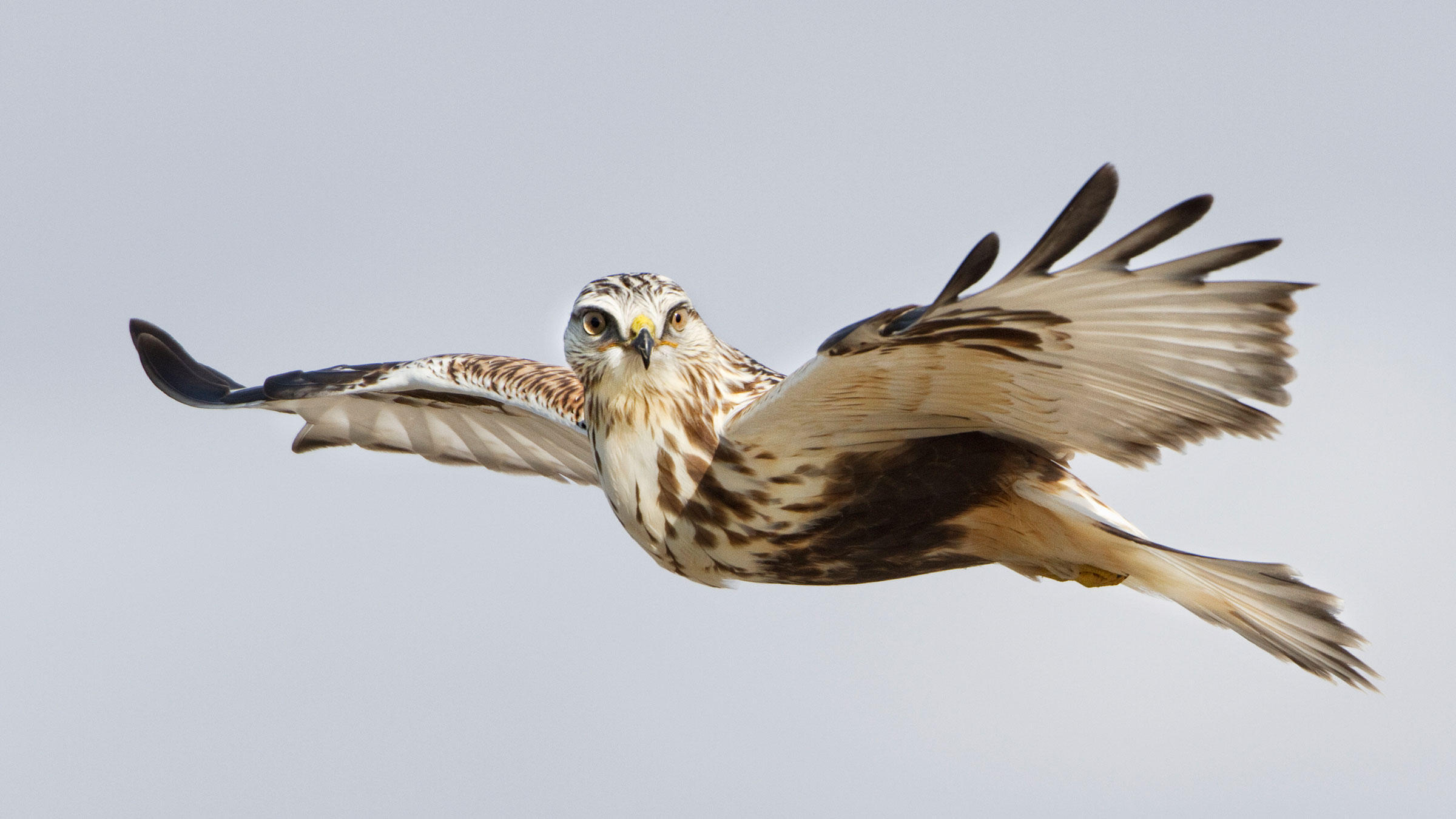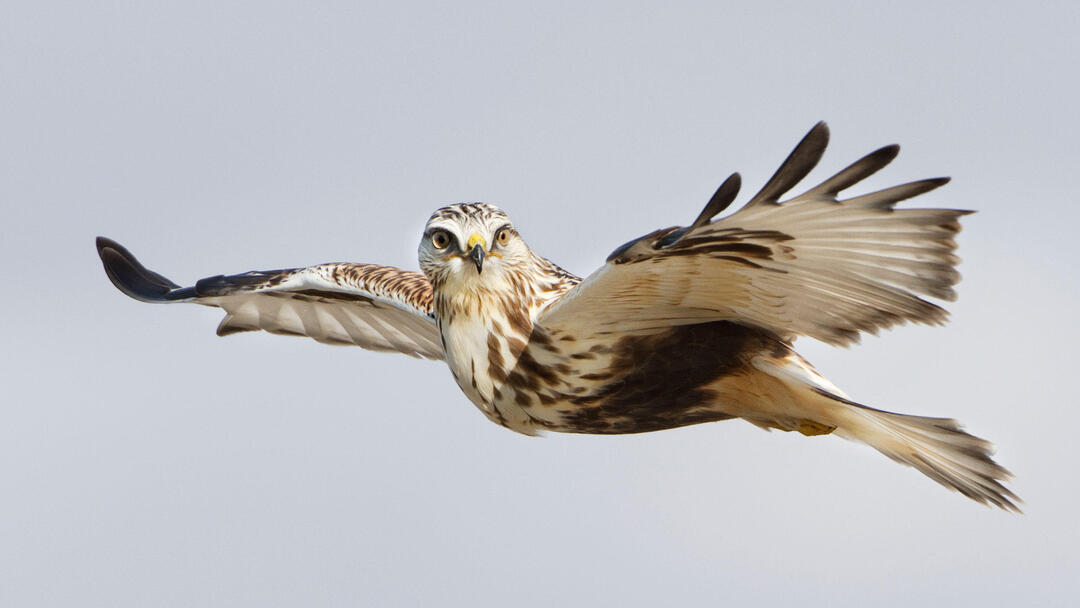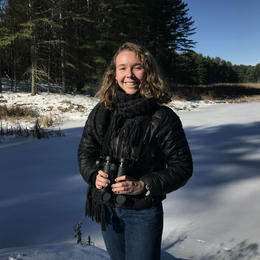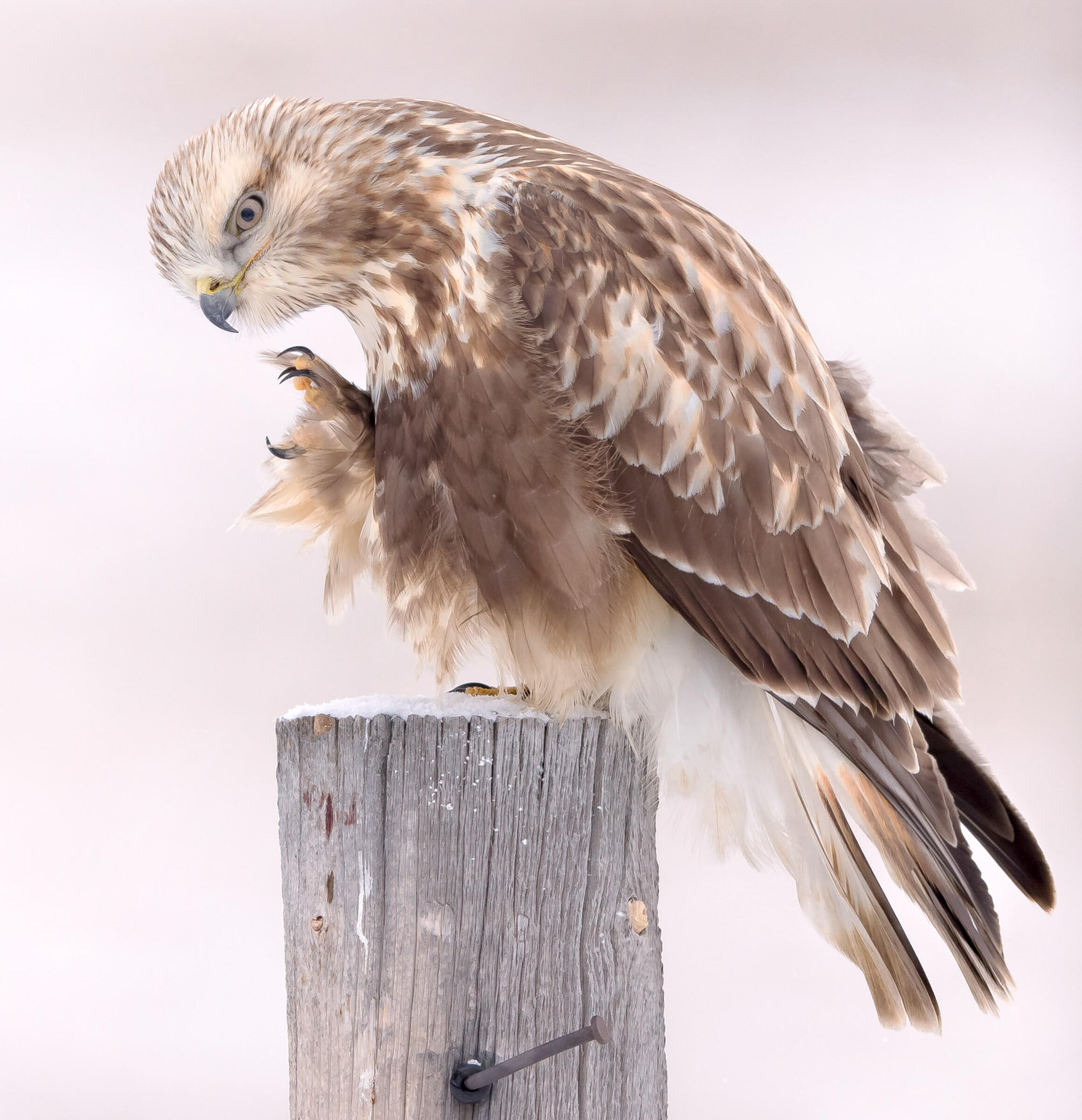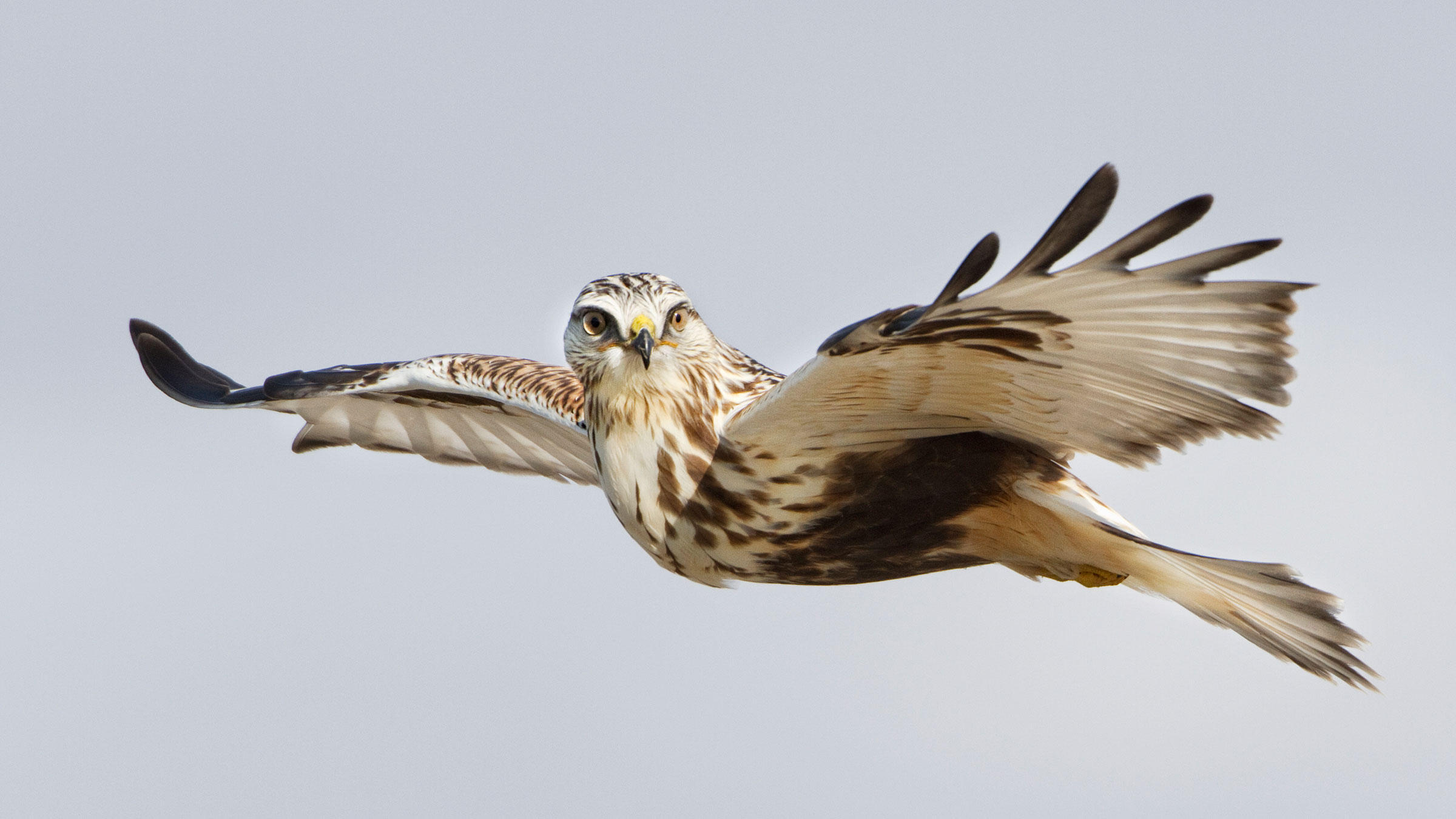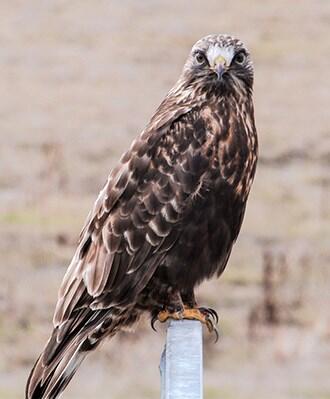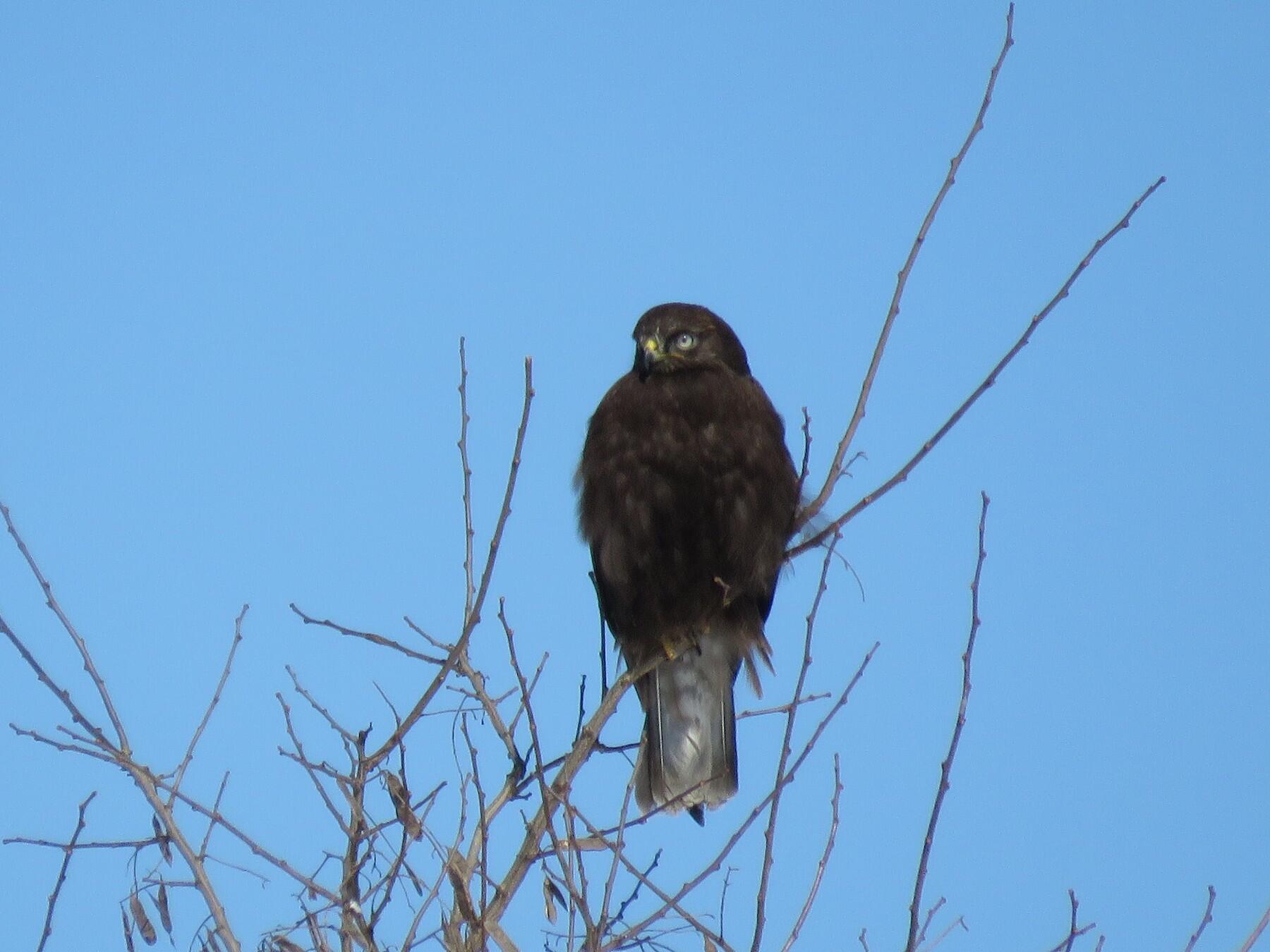Hawks are part of a larger group of birds called birds of prey or raptors such as: hawks, owls, falcons, eagle, osprey - the list goes on. Raptors are birds that have unique adaptations in order to hunt live prey. These adaptations include:
A curved, sharp beak. Birds don't have teeth to break food down, so they have evolved to have different adaptations that ease consumption. For raptors, their beak serves as a 'knife' to cut their food into manageable pieces.
Serious talons. Raptors have long, sharp "nails" that they use to grab into their prey. The strong muscles in their feet help them prey on birds/animals bigger than them.
Binocular vision. Raptors have “binocular” vision, meaning they see objects at the same time with both eyes. This allows owls to see in 3-D and judge distance in a similar way to us.
We'll cover hawks from two different genuses: accipiters and buteos. An accipiter is a type of hawk with short, broad wings and a long rudder-like tail that give it superb aerial agility, while a buteo has very broad, rounded wings and a short, wide tail (Allaboutbirds.org).
Hawks in Winter
Red-Tailed Hawk (Year-round in VT)
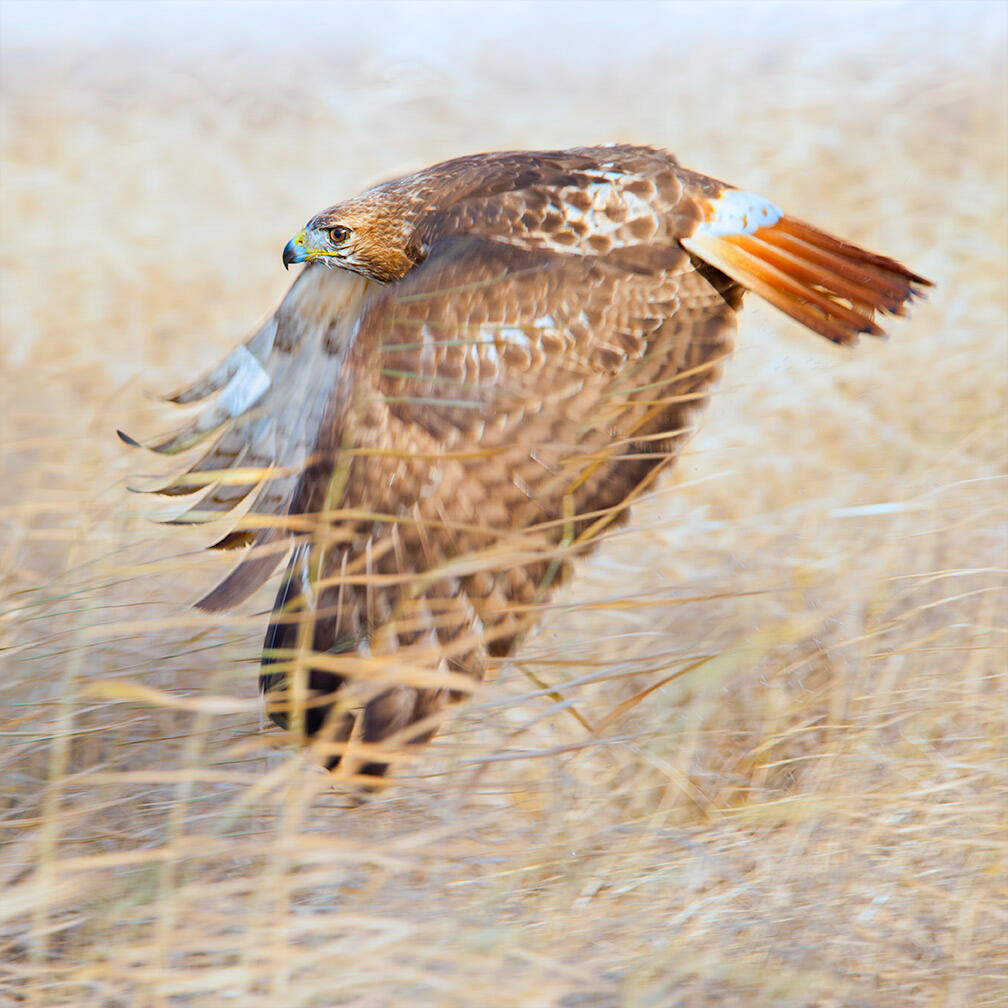
ID info: Red-tail hawks have two color morphs: light and dark. The light morph is more common in the eastern portion of the country, while the dark morph stays west. The light morph has a pale underside and barred (striped) white and brown wings. Their characteristic tail is red on their backside and paler with a barred pattern underneath. Brown head, white throat and a dark band around tip of wings. NOTE: Young red-tailed hawks do not have a red tail until they are an adult.
Flight pattern: Several strong flaps and then gliding. Usually fly in small circles above their prey before diving.
Diet: Small mammals (voles, mice, rabbits, snowshoe hare, etc.) and other birds.
Habitat: Most common across the country. Edges of open fields, where they do most hunting.
Tip: Red-tailed hawks are often perched in a tree, on a telephone pole or fence post along roadways and open fields. Sometimes I count how many I see perched along highway 89 - so far my record is 10!
Fun fact: The call of the red-tail hawk is used for almost every bird of prey in Hollywood, especially the bald eagle.
A seasonal visitor: Rough-legged Hawk
ID info: Large hawk with narrow wings, a long tail and big head. Rough with two color morphs: light and dark. Both color morphs can be found across the continent with dark morphs being more common in the east. The dark morph can only be found in North America. Click through the slide show above to see both morphs.
Light morph: White tail with black band, black patches at the wrist. Males tend to have mottled plumage on their underside, while females often have black bellies (Allaboutbirds.org).
Dark morph: Can be have solid chocolate brown coloring or mottled plumage. Their flight wings have pale undersides, making for a great contrast.
Flight pattern: Easy wing beats, but glides less than other raptors (Allaboutbirds.org). The rough-legged hawk also appears to 'float' on the air as it scouts its prey.
Diet: Small mammals (voles, mice, rabbits, snowshoe hare, etc.) and other birds.
Habitat: Rough-legged hawks are an arctic visitor who seek habitat similar to the open habitat they left up north. While they winter down south (Vermont is very south for them!), they inhabit agricultural fields, meadows, airports and other grassland areas.
Fun fact: The name "Rough-legged" refers to the feathering that extends down the legs to the base of the toes - a helpful adaptation for staying warm in frigid weather (Audubon Field Guide).
Sharp-shinned Hawk (Year-round in VT)
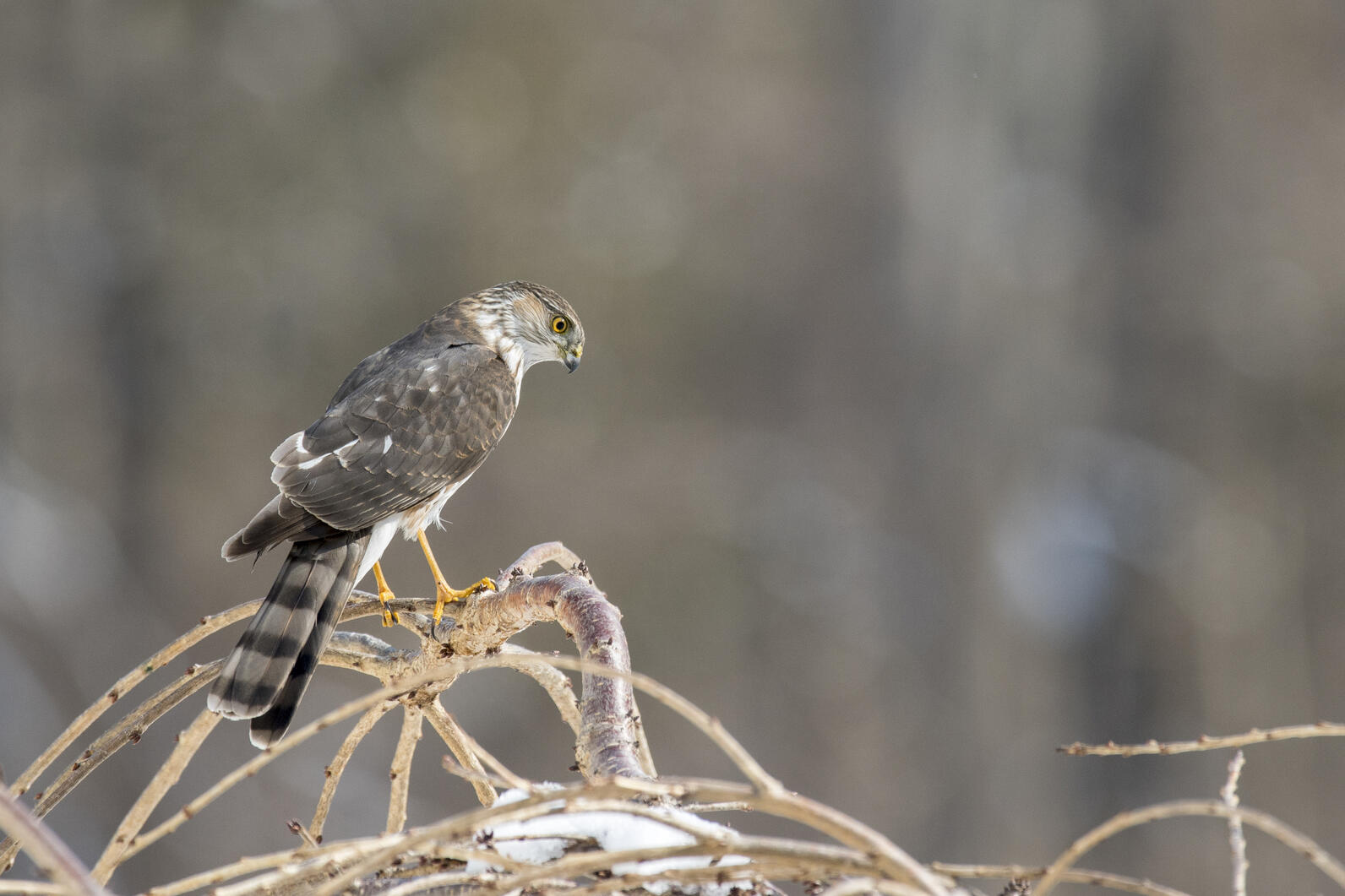
ID info: Size is a great place to start for this small, long-tailed hawk. They're no bigger than an American Crow, which makes it easy to rule out its bigger family members (red-tailed or rough-legged hawk). Adults have small heads, blue-gray plumage with thin, horizontal reddish-orange bars across the chest.
Flight pattern: Distinct flight pattern - kind of frantic looking. A few quick wing beats and then it glides.
Diet: Small mammals and song birds.
Habitat: Forest edges during the winter.
Tip: You could see these opportunists at your backyard birdfeeder - they treat feeder stations like a songbird buffet.
Rare Sighting: Northern Goshawk
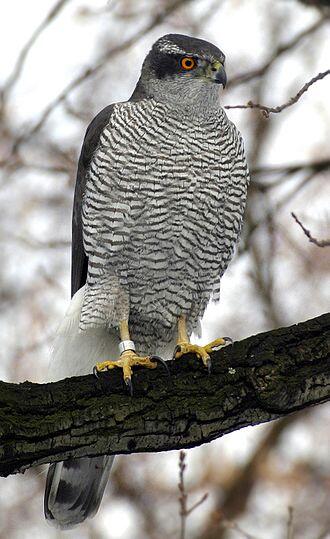
ID info: Bulky raptor with a long tail, gray head, white eyebrow and red eyes. Chest has narrow, horizontal barring. While in flight their chest looks pale and the tail is dark.
Flight pattern: Stiff, powerful wingbeats.
Diet: In the winter, their diet is mostly made of small mammals such as the snowshoe hare, eastern cottontail and squirrels. The Northern Goshawk is also know to eat other birds like the ruffed grouse, woodpeckers, jays and crows.
Habitat: Although the Northern Goshawk is thought to live in Vermont year-round, seeing one in the wild is a rarity. These birds are very secretive and live in dense, mature forests.
Tip: You're not likely to see this bird in your backyard or neighborhood unless you are situated near mature forests. The best way to find one is to wait quietly and patiently in the forest.
DO NOT approach this bird while it is calling or near its nest - they are fiercely defensive and do attack people.
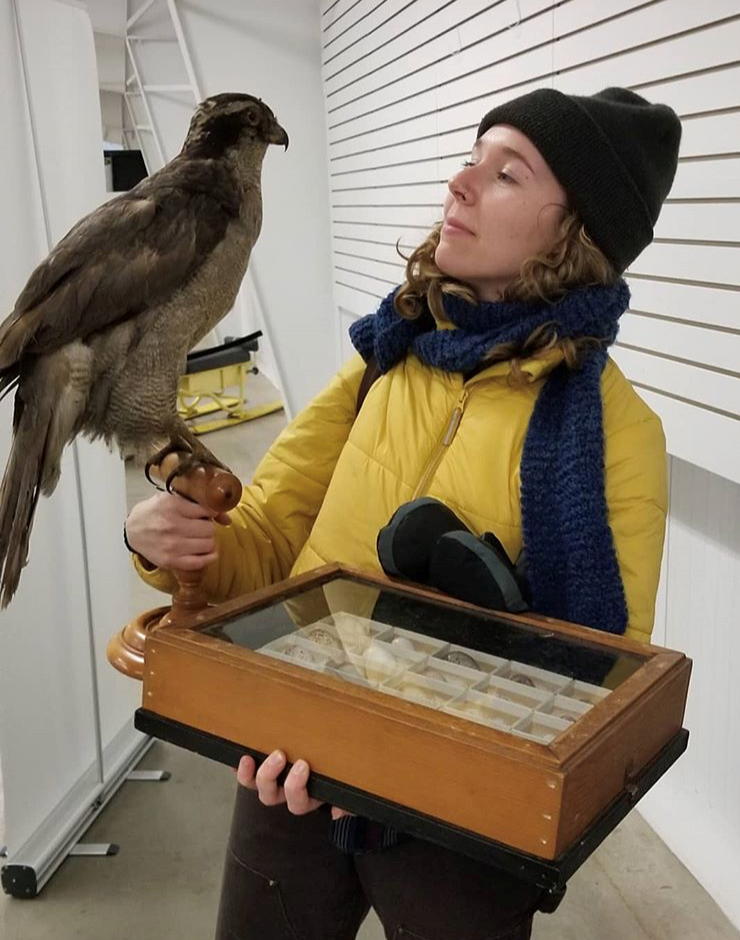
Hawking Pro-Tip:
Often times, hawks are too high off the ground to use plumage or size as identifying characteristics. Instead, it's helpful to become familiar with their silhouettes and flying patterns. Use the chart below to help:
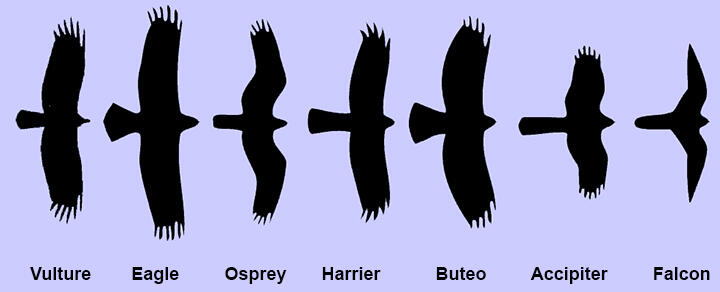
Resources to further your learning:
Hawkwatch.org - Check out Hawkwatch International for raptor-centered events, articles and community science opportunities.
ID Tips for Watching Raptors Using Wing and Tail Shape - Article from All About Birds
Quiz: Identify Raptors in Flight - Identify and age these common raptors.
Six Quick Questions to Help You ID Red-Tailed Hawks - Article from Audubon Magazine
Three Basic Ways to Identify Hawks, Eagles, Falcons, and Other Raptors - Article from Audubon Magazine

